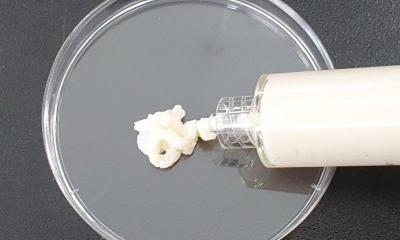Image source: Unsplash/Jamie Fenn
News • "I See"-Research project
Blindness: Cortical prosthesis provides visual information
Providing the blind with visual impressions: That is the aim of the I See project, in which neuroscientists from the University of Bremen are involved. The approach: A miniature camera collects visual information and translates it into signal patterns that are transferred to brain implants.
“The implants should directly trigger the brain areas that are responsible for the processing of visual information,” explains Dr. Udo Ernst from the Institute of Theoretical Physics, who is part of the international I See project consortium along with his colleague Dr. David Rotermund. Alongside the two Bremen scientists, researchers from Bochum, Switzerland, and Canada are involved in I See. The European Union is funding the project with € 900,000.
Our prostheses are to learn the brain’s language using advanced data analysis methods and are to wait for the right moment to carefully connect the desired visual impression with the prior activation of the brain
Udo Ernst
“All attempts made to date to construct a cortical optical prosthesis often only create circular and glaring light points as visual impressions by means of electrical pulses,” says David Rotermund. “If one wishes to increase the number of light points, the parallel stimulation with several electrodes quickly leads to very large injected currents and thus to an overload of the optical system. We want to combine two novel approaches in order to evoke far more structured perceptions with less electrodes and lower currents.”
The prostheses can be significantly improved when the already available activation of the visual cortex is considered and the stimulation is suited to the information coding in the brain. “Our prostheses are to learn the brain’s language using advanced data analysis methods and are to wait for the right moment to carefully connect the desired visual impression with the prior activation of the brain. Put simply: We want to rather work with the optical system than to force the system to do what we want,” states Udo Ernst.
The implantation of cochlea implants is a medical standard when dealing with hearing. Such peripheral prostheses are, however, only possible in a restricted manner for sight. Whilst electronic retina implants can be used for certain illnesses of the retina, such as Retinitis pigmentosa, help for central conditions of the optical system, such as illnesses that are caused by diabetes mellitus, are only thinkable when directly triggering brain activity.
Brain function impairments are accompanied by massive life quality impairments The loss of vision is particularly tragic in a world that is increasingly visually steered. According to an estimate from the German Federation of the Blind and Partially Sighted (DBSV), there are around 150,000 blind and 500,000 visually impaired persons in Germany. Around four million people are affected worldwide.
Source: Bremen University
08.02.2021











